 About a month ago I got wind of a conference called Food for Thought: Culture and Cuisine in Russia & Eastern Europe, 1800-present, at the University of Texas at Austin. In some dream world, I would have booked a flight there and then, packed my audio gear, and plunged in. Next best thing, thanks to the kind offices of Rachel Laudan, was to talk to Mary C. Neuburger, the conference organiser.
About a month ago I got wind of a conference called Food for Thought: Culture and Cuisine in Russia & Eastern Europe, 1800-present, at the University of Texas at Austin. In some dream world, I would have booked a flight there and then, packed my audio gear, and plunged in. Next best thing, thanks to the kind offices of Rachel Laudan, was to talk to Mary C. Neuburger, the conference organiser.
It isn’t clear whether the symposium will give rise to a publication. I hope so. And if, by chance, any of the authors have made versions of their talks available, I would be delighted to link to them here. Just let me know. Other sources include The Austin Chronicle, which took the opportunity to visit and review a local Russian restaurant. And Mary Neuburger also mentioned Anya von Bremzen’s memoir Mastering the Art of Soviet Cooking: A Memoir of Food and Longing. That, I hope, is another story for another time, preferably not in a dream world.
Podcast: Play in new window | Download (Duration: 28:18 — 26.6MB)
Subscribe: Google Podcasts | Spotify | Android | RSS | More
Looking through the conference programme, I had singled out a few papers that I thought might be of interest, and Mary was kind enough to deal with almost all of them, and more besides. Specifics:
- Bella Bychkova-Jordan, University of Texas “Traveling Foods: Diffusion of Native Food Complexes from the New World to Different Parts of Eurasia.”
- Michael Pesenson, University of Texas “Feasting and Fasting in Muscovite Rus.”
- Irina Glouchshenko, Moscow School of Higher Economics “Industrialization of Taste: Anastas Mikoyan and the Making of Soviet Cuisine in the 1930s.”
- Brian Davies and Kolleen Guy, University of Texas San Antonio “Why Don’t We Drink Russian Malbec: The Crimean Origins of a ‘French’ Varietal?”
- Nikolai Burlakoff, Independent Scholar "Borsch (Borscht, Bortsch, Borschch): From Hogweed Soup to Outer Space, the Improbable Odyssey of the World’s Best Known Soup Dish.”
- Mary Neuburger, University of Texas “Cooking for Bai Tosho: A Bulgarian Celebrity Chef Serves up the Past.”
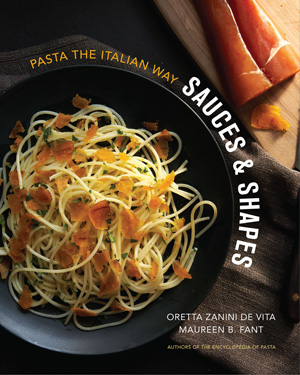 There’s supposed to be this whole mystique surrounding “proper” pasta: how to cook it, which shape with what sauce, how to eat it, all that. And if you’re not born to it, you’ll never really understand it. Well, maybe not, but with a little effort you can get a whole lot closer to authenticity. Maureen Fant, a writer and scholar who has lived in Rome since 1979, has a new book out with her collaborator Oretta Zanini de Vita, making their Encyclopedia of Pasta a tad more kitchen-friendly. Sauces and Shapes: Pasta the Italian Way is a curious blend of the constrained and the relaxed … just like Italy. One of the things they’re relaxed about is shapes for sauces, which came as a bit of a surprise. One of the things they’re not relaxed about is overcooked pasta, which did not.
There’s supposed to be this whole mystique surrounding “proper” pasta: how to cook it, which shape with what sauce, how to eat it, all that. And if you’re not born to it, you’ll never really understand it. Well, maybe not, but with a little effort you can get a whole lot closer to authenticity. Maureen Fant, a writer and scholar who has lived in Rome since 1979, has a new book out with her collaborator Oretta Zanini de Vita, making their Encyclopedia of Pasta a tad more kitchen-friendly. Sauces and Shapes: Pasta the Italian Way is a curious blend of the constrained and the relaxed … just like Italy. One of the things they’re relaxed about is shapes for sauces, which came as a bit of a surprise. One of the things they’re not relaxed about is overcooked pasta, which did not.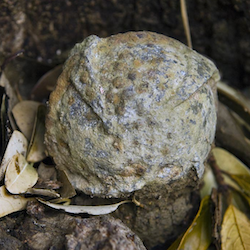
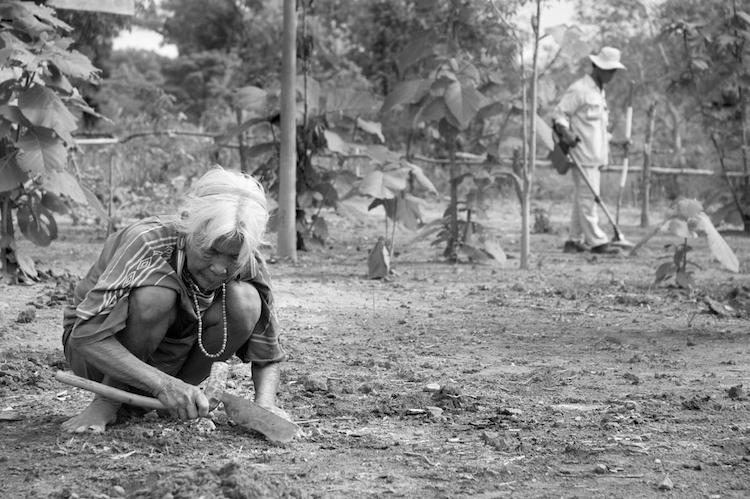
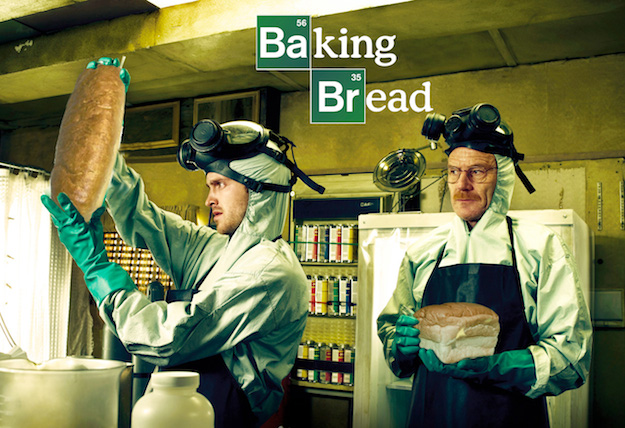
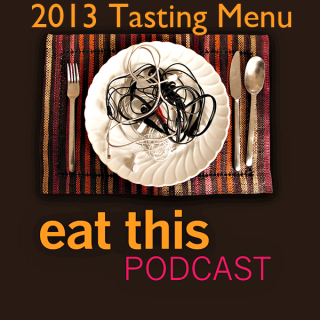 The first episode of 2014 is a look back to some of the topics I covered in 2013, and for what I hope is a good reason. With a podcast, unlike a piece of writing or an image, it is very hard to decide quickly whether this is something I want to pursue further. Of course some things are an instant turn-off: really bad audio quality will usually send me packing, as will a pile of unedited ramblings no matter how good the audio quality. Aside from that, though, it takes time to listen to a podcast and decide whether I want to hear more. With that in mind, I put together this tasting menu from 2013, to give new listeners an idea of what Eat This Podcast is about.
The first episode of 2014 is a look back to some of the topics I covered in 2013, and for what I hope is a good reason. With a podcast, unlike a piece of writing or an image, it is very hard to decide quickly whether this is something I want to pursue further. Of course some things are an instant turn-off: really bad audio quality will usually send me packing, as will a pile of unedited ramblings no matter how good the audio quality. Aside from that, though, it takes time to listen to a podcast and decide whether I want to hear more. With that in mind, I put together this tasting menu from 2013, to give new listeners an idea of what Eat This Podcast is about.